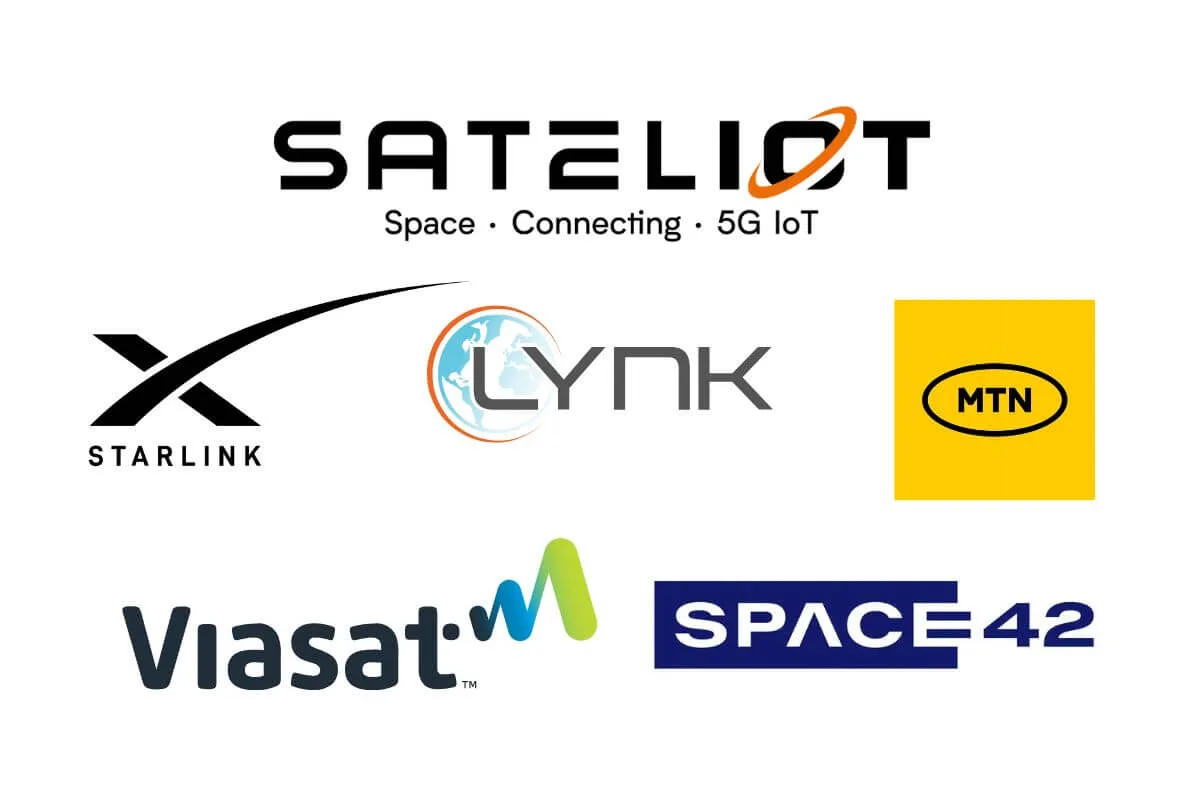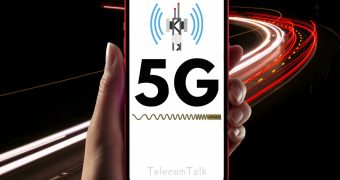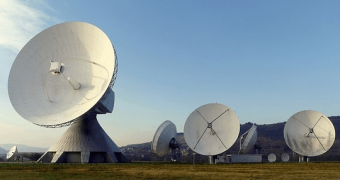
The satellite and telecommunications sector is advancing rapidly, with major investments, new service rollouts, and technology demonstrations. Sateliot secured EUR 70 million for its nanosatellite constellation, while Starlink expanded to Azerbaijan and United Airlines gained FAA approval for Starlink-equipped aircraft. Meanwhile, MTN and Lynk completed Africa's first satellite voice call, Turkcell and Lynk tested direct-to-device connectivity in Turkiye, and Space42 partnered with Viasat on a 5G NTN network.
Also Read: Orange and Telesat Sign Multi-Year LEO Satellite Connectivity Partnership
Check the developments in detail below:
1. Sateliot Closes EUR 70 Million Series B Round
Barcelona-based satellite operator Sateliot has closed its EUR 70 million Series B funding round. "The investment will fund the deployment of a constellation of over 100 satellites to deliver global connectivity, with a focus on remote areas and applications across defence, cybersecurity, telecommunications, logistics, mining, energy, environmental monitoring, agriculture, and critical infrastructure," the company said in a statement on March 26, 2025.
Hyperion, Europe's first defence and aerospace-focused fund, has invested EUR 10 million to advance the use of these capabilities for defence applications. This follows a EUR 13.8 million investment announcement from the Spanish Society for Technological Transformation (SETT) under Spain's Ministry of Digital Transformation, in addition to the EUR 30 million debt injection from the European Investment Bank (EIB), marking the first loan granted to a Spanish space company.
"The latest investment comes from Hyperion, adding to previous contributions from SETT (a Spanish Government fund) and Global Portfolio Investments, as well as financial backing from the EIB and strategic shareholders, including Indra, Cellnex, and SEPIDES," Sateliot added.
Sateliot said the closing of this funding round takes place amid the EU's announcement of institutional funding and investment mechanisms of up to EUR 800 billion, while national governments have committed to increasing defence budgets to 2 percent of GDP.
The funding will help the satellite operator further expand its nanosatellite constellation.
2. Starlink Launches Services in Azerbaijan
Starlink has started providing its satellite internet services in Azerbaijan. In 2023, the Azerbaijan Space Agency concluded an agreement with SpaceX to provide satellite internet services from Starlink in the country.
"Starlink's high-speed, low-latency internet is now available in Azerbaijan!" posted Starlink on X on March 29, 2025.
In another post on X, Starlink stated that it is connecting more than 5 million people with high-speed internet across 125 countries, territories, and many other markets.
3. United Receives FAA Certification for Starlink-Equipped Aircraft
In another development, United Airlines announced on March 31, 2025, that the FAA has approved its first Starlink-equipped aircraft type and that the first commercial flight is planned for May, less than eight months after the deal was first announced.
"The FAA issued a Supplemental Type Certificate (STC) for the Embraer 175, and the airline expects the first commercial flight to be onboard a United Express Embraer 175. United's roll-out of this new technology continues to accelerate with approximately 40 regional jet installs planned monthly and the expectation that the entire two-cabin regional fleet – more than 300 planes – will be completed by the end of the year," the airline said in a statement.
4. MTN, Lynk Claim Africa's First Satellite Voice Call Using a Smartphone
MTN South Africa and satellite provider Lynk Global have successfully conducted a satellite-to-mobile phone call, the companies announced on Thursday, March 27.
"The call in Vryburg enables MTN and Lynk Global to test voice call quality and SMS capabilities over a LEO satellite connection. The technical trial was part of our work to find potential solutions to the challenges of providing coverage in underserviced, rural and remote areas," said MTN South Africa Chief Executive Officer Charles Molapisi.
He said the call marks a proof of concept for MTN’s ability to complement its ground-based cell towers and other infrastructure with LEO satellites. "The implications of potentially leveraging satellite partnerships will not only help MTN achieve its goal of 99 percent broadband population coverage, but most importantly benefit all South Africans."
Lynk Global Chief Commercial Officer Dan Dooley said the successful trial reinforced the effectiveness of Lynk's technology to connect people anywhere in the world: "This marks the first satellite-to-unmodified-mobile phone call made on the African continent."
According to the companies, direct satellite-to-phone contact offers several other potential benefits, including enabling the development of mass notification capabilities for critical alerts such as weather warnings, health advisories, and humanitarian updates.
Vryburg, an agricultural town home to about 21,000 people, was chosen as the site for the trial following ICASA’s approval of the use of radio frequencies on MTN-licensed IMT spectrum for the duration of the trial, MTN said.
Also Read: Verizon Completes First Satellite-to-Mobile Video Call with AST SpaceMobile
5. Lynk and Turkcell Demonstrate Direct-to-Device Technology via LEO Satellites in Turkiye
In another development, Lynk announced on March 25 that it has demonstrated its technology in a testing campaign conducted in Turkiye with Turkcell, the country's largest mobile operator with more than 40 million subscribers. The company said this development is part of Lynk's efforts to bring direct-to-device (D2D) connectivity to Türkiye since both companies announced an agreement in February 2024 to complement network resiliency and mobile coverage.
In collaboration with Lynk, Turkcell conducted what they call the country's first field tests of D2D technology, which enables mobile services—including SMS, voice, and mobile data—directly to standard mobile phones via LEO satellites.
"The tests conducted in a rural area near Konya, Turkiye, utilised Turkcell's mobile frequencies and Lynk's satellites to successfully provide seamless SMS exchanges and voice calls using commercial cell phones without requiring specialized devices or attachments," Lynk said in a statement.
Chief Executive Officer of Lynk, said, "Along with Turkcell, Lynk is committed to enhancing connectivity across rural areas in Turkiye, including in emergencies when terrestrial networks are temporarily inoperable."
6. Space42 to Work with Viasat on a Shared Network for 5G NTN Services
UAE-based AI-powered satellite operator Space42 and Viasat have signed a memorandum of understanding (MOU) to explore partnership options for developing a 5G Non-Terrestrial Network (NTN) initiative. This collaboration enables the satellite companies to address the growing opportunities in direct-to-device (D2D) satellite communications to smartphones, narrowband Internet of Things (NB-IoT), as well as existing and next-generation Mobile Satellite Services (MSS), the companies said.
During the first phase of this partnership, Space42 and Viasat will conduct a series of partner-funded technical and commercial studies to develop a shared, or multi-tenant, multi-orbit 5G NTN infrastructure employing a standards-based open architecture. The infrastructure is intended to support the use of a broad range of L-band, S-band and terrestrial spectrum to enable global roaming among regional network operators.
According to the official release, the companies are exploring new technologies and sustainable system designs to make satellite networks more efficient and ready for 5G models and ensure compliance with the varying telecommunications regulatory frameworks of nations worldwide.
The collaboration follows the industry's best practices and guidelines developed by the Mobile Satellite Services Association (MSSA), leveraging licensed MSS satellite spectrum and open interoperable architectures based on 3GPP standards to ensure seamless integration with global telecommunications networks.
Also Read: Viasat Demonstrates Direct-to-Satellite Connectivity for Vehicles in South America
CEO of Yahsat Space Services, Space42, said: "By fostering an ecosystem built on shared innovation, interoperability, and open standards, we are unlocking new possibilities in direct-to-device (D2D), IoT, and Mobile Satellite Services (MSS). This partnership accelerates time to market, drives cost efficiency, and ensures seamless integration with existing and future networks."
The CEO and Chairman of Viasat, added: "Our announcement today with Space42 is an important further step in our capital efficient growth strategy to build a powerful ecosystem of partners dedicated to future innovation in space based on open 5G standards and scalable architecture. In parallel with our recent agreement with ESA, our partnership with Space42 will further enable work on a next-generation infrastructure leveraging innovative designs based on 5G NTN standards, all while building on a growing coalition of public and private sector partners dedicated to keeping space secure, open and accessible for all."
"A key goal of this partnership is to develop an open architecture space system that is scalable and fosters global collaboration across public and private sector partners, and taps into significant global growth opportunities in the global satellite market," the companies said in a joint announcement on March 11, 2025.
This announcement also builds on Viasat’s new alliance with the European Space Agency (ESA) to further accelerate the development and deployment of NTN D2D systems to serve Europe and the world using MSS spectrum.















